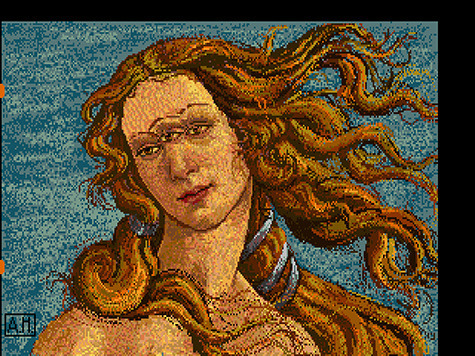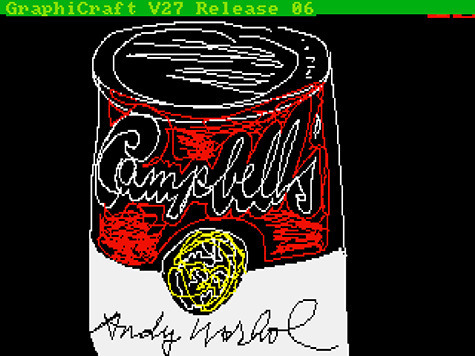Stewart Brand's Blog, page 54
May 24, 2014
Sylvia Earle & Tierney Thys Seminar Media
This lecture was presented as part of The Long Now Foundation’s monthly Seminars About Long-term Thinking.
Oceanic
Tuesday May 20, 02014 – San Francisco
Audio is up on the Sylvia Earle & Tierney Thys Seminar page, or you can subscribe to our podcast.
*********************
Oceans alive – a summary by Stewart Brand
Neither of them eats fish.
Both oceanographers applaud the improved regulation of American fishing and the resulting recovery of important fisheries, but they note that 90% of our seafood is imported, and one-third of that is caught illegally. Two-thirds of global fisheries are overfished. Eating a tuna, Earle points out, is like eating a wolf or a tiger. It is a magnificent predator often decades in age. We no longer commercially harvest wildlife on land. Why do we do it in the sea?
Noting that 15% of land has become protected in the last 100 years, the speakers said we have just started on protecting the oceans. About 3% is now protected, in 8,000 Marine Protected Areas. The goal is 20% by 2020. One hero of the movement is Palau’s president Tommy Remengesau, who this year declared that commercial fishing would be banned in its entire ocean economic zone—230,000 square miles. Likewise New Caledonia just created a 500,000 square mile “Natural Park of the Coral Sea.”
Ocean science keeps yielding profound discoveries. A sea-going photosynthetic bacteria named prochlorococcus was identified as recently as 1986, yet it may be the most abundant species on Earth, responsible for half of all the oxygen in the atmosphere. We couldn’t breathe without it. Deep-diving Earle noted that daylight only reaches about 1,000 feet down in the ocean. Most of the world’s life therefore lives in total darkness, and “bioluminescence is the most common form of communication on Earth.”
Thys observed that the greatest need is for coordinated, consistent remote-sensing in the oceans, and that is increasingly being provided by small robots that travel on their own on and under the surface, sending their data to satellites. Small satellites also are multiplying, providing daily, detailed information from above. Citizen science is growing along with the Maker movement.
“Life came from the oceans,” Thys concluded. “And the life in them continues to nurture life everywhere. We owe them some nurture back.”
Subscribe to our Seminar email list for updates and summaries.

May 20, 2014
Stewart Brand: Reviving Extinct Species — A Seminar Flashback
In May 02013 Stewart Brand discussed De-extinction and one of Long Now’s latest projects Revive and Restore. Bringing back extinct species is a scientific pursuit that is loaded with both cultural and environmental significance. Revive and Restore is galvanizing discussion amongst the general public as well as the academic community around these efforts and funding research on bringing back the passenger pigeon and other species. Twice a month we highlight a Seminar About Long-term Thinking (SALT) from our archives.
Video of the 12 most recent Seminars is free for all to view. Reviving Extinct Species is a recent SALT talk, free for public viewing until late May 02014. SALT audio is free for everyone on our Seminar pages and via podcast. Long Now members can see all Seminar videos in HD.
From Stewart Brand’s summary of this Seminar (in full here):
I concluded, “The fact is, humans have made a huge hole in nature over the last 10,000 years. But now we have the ability to repair some of the damage. We’ll do most of the repair by expanding and protecting wild areas and by expanding and protecting the populations of endangered species.
Some species that we killed off totally, we might consider bringing back to a world that misses them.
In the clip below Stewart describes Pleistocene Park a project in present day Siberia to re-establish the mammoth steppe ecosystem which was prevalent there over 100,000 years ago. They’ve been re-introducing once-native non-extinct species since 01988, but the big one is still missing. Stewart tells us they are ready for the mammoth:
Stewart Brand is a co-founder and President of the Board of Directors of The Long Now Foundation. He created and edited the Whole Earth Catalog (National Book Award), and co-founded the Hackers Conference and The WELL. His books includeThe Clock of the Long Now; How Buildings Learn; and The Media Lab. His most recent book Whole Earth Discipline, is published by Viking in the US and Atlantic in the UK.
In July 02014 Stewart and Revive and Restore will be in Martha’s Vineyard, Massachusetts to discuss the potential de-extinction of the Heath Hen. They are looking for volunteers to help with those events.
The Seminars About Long-term Thinking series began in 02003 and is presented each month live in San Francisco. The series is curated and hosted by Long Now’s President Stewart Brand. Seminar audio is available to all via podcast. Everyone can watch full video of the last 12 Long Now Seminars. That includes this Seminar video until late June 02014. Long Now members can watch the full ten years of Seminars in HD. Membership levels start at $8/month and include lots of benefits. You can join Long Now here.

May 16, 2014
Retrocomputing Brings Warhol’s Lost Digital Art Back to Life

In 01985, Andy Warhol used an Amiga 1000 personal computer and the GraphiCraft software to create a series of digital works. Warhol’s early computer artworks are now viewable after 30 years of dormancy.
Commodore International commissioned Warhol to appear at the product launch and produce a few public pieces showing off the Amiga’s multimedia capabilities. According to the report, “Warhol’s presence was intended to convey the message that this was a highly sophisticated yet accessible machine that acted as a tool for creativity.”
In addition to creating a series of public pieces, Warhol made digital works on his own time. He was given a variety of pre-release hardware and software. This led him to eventually experiment with digital photography and videography, edit animation and compose digital audio pieces. The Studio for Creative Inquiry’s report states:
All of this (digital photography, video capturing, animation editing, and audio composition) had been done to limited extents earlier, but Warhol was an incredibly early adopter in this arena and may be the first major artist to explore many of these mediums of computer art. He almost certainly was the earliest (if not the only, given several pre-release statues) possessor of some of this hardware and software and, given their steep later sale prices, possibly the only person to have such a collection.
Decades later, artist Cory Arcangel learned of Warhol’s Amiga experiments from a YouTube clip showing Warhol at the launch altering a photo of Deborah Harry by using what nowadays would be considered basic digital art tools, such as flood fills. (shown in the above video). This scene set in motion what would become a 3-year-long quest of technological feats and multidisciplinary collaboration to recover and catalog the previously-unknown Warhol artworks living in degrading 30-year-old Amiga floppy disks.
According to the contract with Commodore, Warhol owned the rights to any hardware given to him and all the work he created with the machines. After his death, his files and machines were stashed away and unpublished in the archives at the Warhol Museum. The collection contained two Amiga 1000 computers, one of which was never used, parts of a video capturing hardware setup, a drawing tablet, and an assortment of floppy disks of mostly commercial software in their original boxes:
It was immediately clear that this was an exciting window into history given that several pieces of Amiga hardware had shipping labels directly from Commodore, others had internal Commodore labels warning that the components were not yet for sale lacking FCC approval, and that the drawing tablet appeared hand-made.
In December 02011, Arcangel approached the Warhol Museum with the proposal of restoring the Amiga hardware and archive the contents of associated disks. In April 02012, he teamed up with the Carnegie Mellon Computer Club, a team of experts in obsolete computer maintenance and software preservation, to retrocompute and forensically extract data from the roughly 40 Amiga disks. 10 of those disks were found to contain a total of at least 13 graphic files they think to be created or altered by Warhol.

Cory Arcangel (Center), and CMU Computer Club members Michael Dille (Left), Keith A. Bare (Right) during the data recovery process at The Andy Warhol Museum. Photo: Hillman Photography Initiative, CMOA.
With a lot of hacking, sleuthing and extensive Amiga knowledge, the CMU Computer Club figured out how to examine the contents on Warhol’s disks. In a simplified explanation, it boils down to a two-tier process–first creating copies of the disks in a standard filesystem-level disk image and then looking through those files to see if any were in known graphic formats. Some were, some weren’t. It took months of retrocomputing the GraphiCraft software to convert the unknown graphic formats into a file that could be opened today.
To extract data and generate an archival dump, the Computer Club used a USB device called KryoFlux. This device attaches a floppy drive to the modern day PC and reads and writes standard-format floppy disks. But its real advantage is its ability to capture a very low-level picture of the disks. The KryoFlux created raw dumps as close as possible to the original floppies and standard filesystem disk images (ADF files). These ADF files work with Amiga emulators. Using the KryoFlux also allowed for better handling of degrading and fragile disks (many had magnetic materials coming off the substrate) and it generated standard ADF files for floppy disks containing non-standard encodings or copy-protection schemes.
The following day after making copies of Warhol’s disks, the disk images were loaded in the Amiga emulator in the basement of CMU Computer Club member Michael Dille. The disk hand-labeled “GraphiCraft” contained files with names like “flower.pic,” “campbells.pic” and “marilyn1.pic,” a clear sign that something was on that disk. The .pic files were unrecognizable by modern software and would later require the club’s resident Amiga expert Keith Bare to do deeper hacking and reverse computer engineering in order to crack the GraphiCraft format. But on that day, two files on the same disk named “tut” and “venus” were in a common format used on Amigas, “Interchange File Format” (IFF). These two files were readable by using the software ImageMagick to convert the .iff files to PNG–a format modern software can understand. On the evening of March 2, 02013, Warhol’s Venus displayed on the screen for the first time in 30 years.
Warhol’s digital works are proof that the Amiga 1000 was highly impressive for its time. The first of the Amigas, it already had better sound and graphics abilities than its competitors. It had a 4-channel stereo and up to 4,096 colors and 640×200 pixels. In comparison, PCs had “beepers” and up to 16 colors, while Macintoshes had 22.5kHz mono audio and monochrome displays (Studio for Creative Inquiry’s report).
These recovered images give insight to the workflow and capabilities of early computer art. In the above photo, Warhol used clip art to create the three identical eyes on Venus. The digital reinterpretation of Warhol’s Campbell’s Soup, pictured below, was modified with a line tool. It shows Warhol’s willingness to experiment and adapt to a new medium.
Earlier this week, the Carnegie Museum of Art released Trapped, the second of a five-part documentary series by the Hillman Photography Initiative to “investigate the world of images that are guarded, stashed away, barely recognizable or simply forgotten.” The short documentary gives a detailed look at the techno-archaeologists’ process of decoding the obsolete file types. (Minute 8:47 shows the copying of Warhol’s disks.)
The forensic effort and process of studying the disks contents sheds light to the impermanent nature of digital material and the need for digital preservation. “In a way, a lot of the data and things we work with almost seem like it’s imaginary,” explained Bare in Trapped, “It’s electrons in a machine. You can turn it into photons if you use a display, but in some sense it’s almost like it’s not even there.”

May 15, 2014
Stefan Kroepelin Seminar Tickets
The Long Now Foundation’s monthly
Seminars About Long-term Thinking
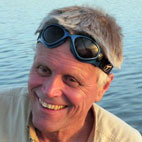
Stefan Kroepelin presents “Civilization’s Mysterious Desert Cradle: Rediscovering the Deep Sahara”
TICKETS
Tuesday June 10, 02014 at 7:30pm SFJAZZ Center
Long Now Members can reserve 2 seats, join today! General Tickets $15
About this Seminar:
Egypt’s pharaonic civilization rose on the Nile, but it was rooted in the deep Saharan desert and pushed by climate change, says Stefan Kröpelin.
Described in Nature magazine as “one of the most devoted Sahara explorers of our time,” Kröpelin has survived every kind of desert hardship to discover the climate and cultural history of northern Africa. He found that the “Green Sahara” arrived with monsoon rains 10,500 years ago, and people quickly moved into the new fertile savannah. There they prospered as cattle pastoralists—their elaborate rock paintings show herds of rhinoceros and scenes of prehistoric life—until 7,300 years ago, when gradually increasing desiccation drove them to the Nile river, which they had previously considered too dangerous for occupation.
To manage the Nile, the former pastoralists helped to invent a pharaonic state 5,100 years ago. Its 3,000-year continuity has never been surpassed.
Kröpelin, a climate scientist at the University of Cologne, is a dazzling speaker with hair-raising stories, great images, and a compelling tale about climate change and civilization.

May 13, 2014
The Interval: Long Now’s New Home
The Interval at Long Now is almost ready for you to visit. We’ve shown you design comps and construction images before, but at last we can share photos of the real thing. Almost the real thing. There’s still some more work to do, but the end is in sight.
We’d like to thank to everyone who made this project possible especially our donors. Your support at every level helped us build a place where Long Now’s fans, members, and the public can gather. But more than that The Interval is also Long Now’s headquarters, our offices are right upstairs. And we are so proud that this beautiful space is our new home!
Our funding goal is also in sight. There’s still time to become a charter donor. At any level you choose to give, charter donors names will be listed on our donor wall and you’ll get invites to some pre-opening parties, amongst other benefits.
Now we’d like to show you around with a brief photo tour of some of the features that we think make The Interval special. All photos are by Because We Can, the fantastic design-build team we’ve worked with on the Interval renovation. Their work and that of our builders, Oliver & Company, have been essential to making The Interval a reality.
In 02006 we moved into Fort Mason Center, a campus of former military buildings on the north shore of San Francisco which now houses arts groups and non-profits. Our building dates to the 01930s, the youngest at the Fort by 20 years.
The room we are in was originally a forge and machine shop. When we began to convert our old museum and store space into The Interval, we discovered the shop’s original concrete floor and knew we could never cover it up again.
The floor’s industrial imperfections somehow match perfectly with the natural variances in the specially quarried stone that serves as our bar top.
On the ceiling above the bar you’ll find The Interval’s “bottle keep” featuring custom-made bottles by Adams & Chittenden Scientific Glass.
Each bottle represents a generous donor who helped fund The Interval. At our pre-opening party just for bottle club donors, they can choose whether to fill their bottle with limited edition gin or whiskey, or instead select a rare, aged pu-erh tea. Both exclusive spirits are made for us by St George Spirits, while the tea is sourced by Samovar Tea Lounge.
And if you’d like a bottle of your own, or give at any level there’s still time to give to The Interval. Everyone who gives in May will get charter donor benefits including invites to various pre-opening events in the next three weeks.
The bright, slowly changing object behind the bar is an original creation of Brian Eno. One of a very limited set of “ambient paintings”, this is the only one in America and the only one on permanent public display anywhere.
Similar to Eno’s 77 Million Paintings and his “Lighting the Sails” project at the Sydney Opera House, this generative artwork continuously evolves in different patterns, never repeating itself in millions of vivid chromatic combinations.
Below Brian explains the background of his interest in generative art. The footage also includes many examples of his work that are similar to what you will see at The Interval.
Brian created music especially for The Interval, which will be played on our Meyer Galileo 616 system. More details about The Interval’s incredible sound system will be featured on the blog soon.

As you may know, Brian Eno is a co-founder of Long Now and sits on our Board. Another distinctive feature of The Interval comes from his work enabling our 10,000 Year Clock to play a different bell sequence every day for ten millennia. Eno and Danny Hillis designed an algorithm that will ring over 3.5 million unique bell sequences from 10 bells.
The Chime Generator is the mechanism that controls the bell sequence. An analog computer featuring a series of beautifully machined geneva wheels, it manages the Clock’s daily algorithmic song production. A decade ago we built a one tenth scale prototype of the Chime Generator. For The Interval we’ve converted that prototype into a table–a museum piece that you can also rest your drink on.
We’ve posted a lot recently about the Manual for Civilization, our project to select 3,500 books that could help sustain or rebuild civilization. The Interval will be the home of this collection with bookshelves stretching from floor to ceiling. In addition to selecting the books, we need to acquire them. That’s one of the continuing costs that tax-deductible donations to The Interval brickstarter will help us fund.
The Manual won’t just live at The Interval. Thanks to our partners at the Internet Archive the books will also be available in their online collection. The list of books is growing with the help of our donors, members and some special guests. You can follow our blog for the latest details.
As exciting as these pictures are, what’s missing are the people. Our first donor events start within the week. Please consider a donation if you’d like to join in the opening celebrations. Regular day and evening hours begin in June, and public events will start imminently.
We hope you’ve enjoyed this sneak peek at what The Interval has in store–you’ll find even more images on our Flickr. We look forward to sharing more details in the weeks ahead and we can’t wait to welcome you to our new home: The Interval at Long Now.

May 11, 2014
Tony Hsieh Seminar Media
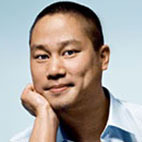 This lecture was presented as part of The Long Now Foundation’s monthly Seminars About Long-term Thinking.
This lecture was presented as part of The Long Now Foundation’s monthly Seminars About Long-term Thinking.
Helping Revitalize a City
Tuesday April 22, 02014 – San Francisco
Video is up on the Hsieh Seminar page.
*********************
Audio is up on the Hsieh Seminar page, or you can subscribe to our podcast.
*********************
The downtown company – a summary by Stewart Brand
The business advice that Tony Hsieh most took to heart came from an ad executive: “A great brand is a story that never stops unfolding.” With his own company, Zappos, he determined that “brand equals culture,” and made quality of culture the top corporate priority, followed by customer service, and then selling shoes and clothing. The formula worked so well that Zappos outgrew its collection of buildings in suburban Las Vegas. Time to build a campus.
Other suburban corporate campuses—Google, Nike, Apple—struck him as isolated and insular. He wondered if a company could be like New York University, embedded in downtown Manhattan, with all of its buildings and no end of urban amenities within a five-minute walk. Edward Glaeser’s book The Triumph of the City described how cities unfold forever, driven by density and intense variety, while companies all eventually go stagnant and die. Maybe immersion in a downtown could help keep his company unfolding, and maybe bringing company start-up culture to a decaying urban core could restart its vitality.
Zappos bet the company on the idea. They took over the abandoned city hall in the dead-end part of Las Vegas known as Fremont East and spent $200 million buying up nearby properties, $50 million on local small businesses, $50 million on tech start-ups, and $50 million on education, arts, and culture. Hsieh’s strategy is to increase: “Collisions” (serendipitous encounters); “Co-learning” (a community teaching itself); and “Connectedness” (density, diversity, and reasons to engage).
They built a Shipping Container Park with three stories of shops, amusements, and tech start-ups wrapped around a courtyard for food, play, and hanging out. They planted Burning Man mega-art on corners throughout the neighborhood “to keep you walking one more block.” Inspired by TED, the Summit Series, and especially SXSW (the South by Southwest festival in Austin), they built a theater for frequent talks and organized an annual “Life is Beautiful” music festival attracting 60,000.
Hsieh figures that “collisionability” can be quantified and designed for. He thinks that street-level interaction can be made so rich that it compensates for the lower density of low-rise buildings, with 100 residents/acre. Thus he blocked off the skyway from Zappos’s parking lot to its headquarters in the city hall. Use the street. Make street activities really attractive. Active residents, he calculates, will experience 1,000 collisionable hours a year (3.6 hours/day, 7 days/week, 40 weeks/year). Ditto for “purposeful visitors” (12 hours/day, 7 days/week, 12 weeks/year)—you are invited to be one.
If Zappos helps foster an urban “culture of openness, collaboration, creativity, and optimism,” Hsieh says, then the city can prosper, and the company with it, and both can keep unfolding their stories indefinitely.
Subscribe to our Seminar email list for updates and summaries.

May 9, 2014
First Look at The Interval at Long Now
After a year under construction our beautiful new venue is almost ready to debut. Here are a few first images of The Interval at Long Now our new bar, cafe, museum and home to The Long Now Foundation at Fort Mason Center in San Francisco.
The Interval will open first for a series of events exclusively for charter donors who have helped crowdfund this redesign. It’s not too late to become a charter donor and get an invite to the parties and lots of other fun perks as an Interval supporter.
On Monday we’ll have more information to share about The Interval. And more pictures, too.
Photos by Because We Can

May 7, 2014
Nicholas Negroponte: Beyond Digital – A Seminar Flashback
In April 02013 Nicholas Negroponte went Beyond Digital for Long Now’s Seminar audience. Twice a month we highlight a Seminar About Long-term Thinking (SALT) from our archives.
Video of the 12 most recent Seminars is free for all to view. Beyond Digital is a recent SALT talk, free for public viewing until late May 02014. SALT audio is free for everyone on our Seminar pages and via podcast. Long Now members can see all Seminar videos in HD.
From Stewart Brand’s summary of this Seminar (in full here):
As the world goes digital, Negroponte noted, you see pathologies of left over “atoms thinking.” Thus newspapers imagine that paper is part of their essence, telecoms imagine that distance should cost more, and nations imagine that their physical boundaries matter. “Nationalism is the biggest disease on the planet,” Negroponte said. “Nations have the wrong granularity. They’re too small to be global and too big to be local, and all they can think about is competing.” He predicted that the world is well on the way to having one language, English.
Nicholas Negroponte founded the MIT Media Lab and the One Laptop per Child Association. He is author of Being Digital and was the first investor in Wired magazine for whom he was also a regular columnist.
The Seminars About Long-term Thinking series began in 02003 and is presented each month live in San Francisco. The series is curated and hosted by Long Now’s President Stewart Brand. Seminar audio is available to all via podcast. Everyone can watch full video of the last 12 Long Now Seminars. That includes this Seminar video until late May 02014. Long Now members can watch the full ten years of Seminars in HD. Membership levels start at $8/month and include lots of benefits. You can join Long Now here.

May 6, 2014
Sylvia Earle & Tierney Thys Seminar Primer
 National Geographic Explorers-in-Residence Sylvia Earle & Tierney Thys are among the world’s leading champions of ocean conservation. Through research, writing, and public outreach, they raise awareness of the ocean’s myriad beauties – and its vital importance to all life on the planet.
National Geographic Explorers-in-Residence Sylvia Earle & Tierney Thys are among the world’s leading champions of ocean conservation. Through research, writing, and public outreach, they raise awareness of the ocean’s myriad beauties – and its vital importance to all life on the planet.
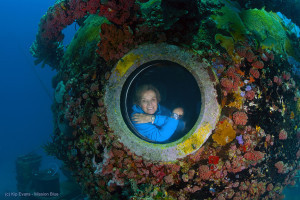 Sylvia Earle is a pioneer in the field of ocean conservation and marine engineering. She is the founder of Deep Ocean Engineering and Deep Ocean Exploration and Research, companies that develop the tools required for deep ocean exploration – from robotic submersibles to specialized lighting and cameras. She holds a PhD in marine biology from Princeton, has served on the National Advisory Committee on Oceans and Atmosphere, and was appointed chief scientist at the National Oceanic and Atmospheric Administration (NOAA) in 01990 – becoming the first woman to hold that post. Her publications number more than 190, and include both academic articles and children’s books about the deep ocean.
Sylvia Earle is a pioneer in the field of ocean conservation and marine engineering. She is the founder of Deep Ocean Engineering and Deep Ocean Exploration and Research, companies that develop the tools required for deep ocean exploration – from robotic submersibles to specialized lighting and cameras. She holds a PhD in marine biology from Princeton, has served on the National Advisory Committee on Oceans and Atmosphere, and was appointed chief scientist at the National Oceanic and Atmospheric Administration (NOAA) in 01990 – becoming the first woman to hold that post. Her publications number more than 190, and include both academic articles and children’s books about the deep ocean.
Called “her deepness” by the New York Times and the New Yorker, Earle has led more than 100 diving expeditions and logged more than 7,000 hours under water. She set a depth record of 1,250 feet in a 01979 solo dive off the coast of Oahu, and led an all-female team of aquanauts on an extended mission at an ocean-floor habitat and laboratory as part of the Tektite Program, a collaboration between NASA, GE, and the Navy to examine the biological and psychological effects of long-term isolation in small spaces.
Earle has led a number of Sustainable Seas Expeditions with the NOAA, and has pursued the establishment of protected areas in the ocean as a National Geographic Explorer-in-Residence. She won a TED prize in 02009 for her wish that people
would use all means at [their] disposal – films, expeditions, the web, new submarines – and campaign to ignite public support for a global network of marine protected areas; Hope Spots large enough to save and restore the ocean, the blue heart of the planet. How much? Some say 10 percent, some say 30 percent. You decide: how much of your heart do you want to protect? Whatever it is, a fraction of one percent is not enough. My wish is a big wish, but if we can make it happen, it can truly change the world, and help ensure the survival of what actually — as it turns out — is my favorite species; that would be us. For the children of today, for tomorrow’s child: as never again, now is the time.
She founded Mission Blue in order to pursue that wish of establishing “hope spots” – protected areas that can serve as the “seeds of tomorrow’s healthy ocean:”
Networks of marine protected areas maintain healthy biodiversity, provide a carbon sink, generate life-giving oxygen, preserve critical habitat and allow low-impact activities like ecotourism to thrive. They are good for the ocean, which means they are good for us.
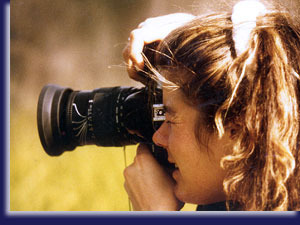 Earle has long been a mentor to Tierney Thys, whom National Geographic describes as “the next generation’s champion of ocean exploration.” A Marine biologist, Thys has devoted her career to the Mola mola, or giant ocean sunfish. Enchanted with the ocean from a young age, she began working with Earle at Deep Ocean Engineering before obtaining a doctorate in zoology at Duke, specializing in the biomechanics of swimming muscles in fish.
Earle has long been a mentor to Tierney Thys, whom National Geographic describes as “the next generation’s champion of ocean exploration.” A Marine biologist, Thys has devoted her career to the Mola mola, or giant ocean sunfish. Enchanted with the ocean from a young age, she began working with Earle at Deep Ocean Engineering before obtaining a doctorate in zoology at Duke, specializing in the biomechanics of swimming muscles in fish.
Today Thys is a leading expert on the ocean sunfish, a very large yet mostly unknown open ocean fish. Her research team tags the creatures and collects tissue samples in efforts to learn more about their reproductive habits, their use of ocean currents to travel across the world, their jellyfish diet, and the size of their population. In a 02003 TED talk, Thys explains what the Mola mola might teach us about life in the open ocean, and shows that marine research can awaken a love for the ocean in all of us.
I don’t think I could say it any better than the immortal Bard himself: “One touch of nature makes the whole world kin.” And sure, it may be just one big old silly fish, but it’s helping. If it’s helping to unite the world, I think it’s definitely the fish of the future.
Thys is also an educator and filmmaker: she works with nonprofits and research institutes to advance public understanding of science and the environment through films. She has written, narrated, and produced documentaries about the ocean and global environmental change with the Sea Studios Foundation, where she is the senior science editor, as well as TED Ed.
Earle and Thys both work to raise public awareness of the oceans and the vital role they play in sustaining life on the planet. As Earle writes in the Huffington Post,
Human beings are sea creatures, dependent on the ocean just as much as whales, herring or coral reefs. The big blue area that dominates the view of earth from space was once our home and today represents 97 percent of the biosphere where life exists, providing the water we drink and the air we breathe. And we are destroying it.
The two will meet on stage at the SFJAZZ Center on May 20th to lead their audience on a journey into the world’s oceans. They will explore the mysteries of the life it holds, discuss the ways we are threatening its health, and review what humanity can do to protect its well-being. You can reserve tickets, get directions, and sign up for the podcast on our Seminar page.

May 5, 2014
Algonquian Linguistic Atlas
The Algonquian Linguistic Atlas is a project helping to preserve and celebrate North America’s linguistic diversity. The Algonquian family of languages have an estimated 50,000 speakers and the atlas allows viewers to explore the roughly 30 languages within it.
The project gives speakers and researchers a common tool to study and share the cutural diversity Native Americans developed over many thousands of years.
Linguist Arika Okrent points out,
It isn’t just a repository of words and stories though. It is organized in a way that lets you explore the similarities and differences between the languages, and see how they are distributed by place.
Pins on the map indicate the locations of speakers who have contributed recordings of common phrases. Choose a phrase to see how it’s spoken in languages all accross Canada and the northern United States.
By doing this, it becomes easy to see the relatedness, but also the divergence of the languages. Is the distance between two speakers a good predictor of how differently they’ll say a given phrase? Give the map a spin and see for yourself.

Stewart Brand's Blog
- Stewart Brand's profile
- 291 followers





